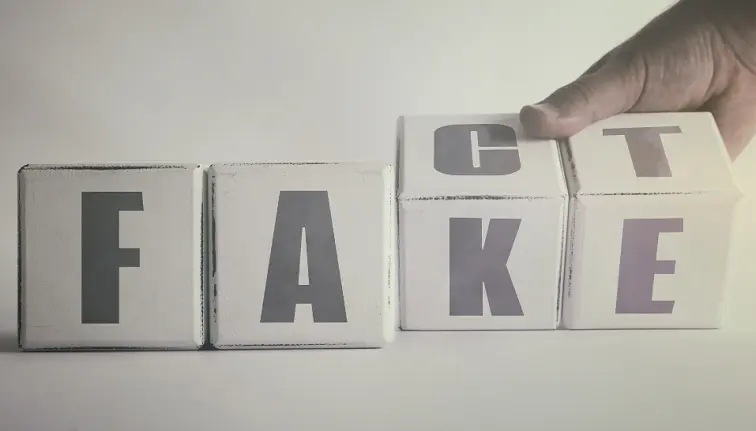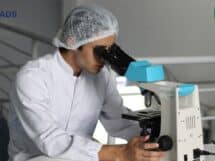If the tide of health related misinformation and fake news is left unchecked it will snowball with deleterious impact on our overall well-being and healthcare services. A global collaboration is the need for the day to combat medical misinformation.
In today’s era of the incessant and persistent bombardment of information from all sources into our daily living, it is hard to stay away from chunks of data or news about the world that surrounds us.
With this constant need to be ‘adequately informed’, we all fall prey to misinformation and myths: the inevitable accompaniment to any source of information. All that it takes is a minimal distortion or falsification of few facts to subserve any individual or collectivistic interest, and you get a ‘glorified novel piece of wrong information’ delicious and viral to our hungry minds for a furious consumption.
Psychologically termed as ‘basic curiosity’ that humankind easily gets affected with, this can be an epidemic attracting us to false stories/information/news that seems different to our usual norms and beliefs. These become more acceptable if they have a religious, global or economic underpinning to them and most importantly if they concern ‘health’.
Yes, unfortunately, ‘health-related’ or medical misinformation has been on the rise over centuries and can get as devastating as the diseases themselves. The Centre for Disease Control (CDC) has rightly pointed out that “one of the global problems we deal with today is the viral spread of medical myths”, which is in no way less scary than a viral epidemic. The promises of ‘easy-cures’ and ‘life-savers’ are randomly prevalent now which quickly catch public-attention, leading to parsimony of panic and confusion.
The domains of medical misinformation have been widespread: from the ominous example of MMR vaccine being linked to autism, propaganda against influenza, pneumonia and HPV vaccines, promotion of e-cigarettes as a safe alternative, bad menstrual hygiene measures, stem cell therapy for autism, call for banning the safe practice of electroconvulsive therapy in treating severe mental illness, the examples involve diverse fields of health. In fact, the World Health Organisation (WHO) has announced the ‘anti-vaccine’ movement with false claims as a 2019 World health crisis.
Besides, the numerous digital and personalised forums that spread medical misinformation, there is a substantial contribution of ‘pseudoscience’ (i.e. beliefs or ideas without enough evidence that are considered to be scientific examples). A common example would be to perform a particular ritual related to a particular astronomical date to cure a particular illness. Now, some people equate alternate forms of medicine (like Yoga, Ayurveda, Homeopathy, etc.) with pseudoscience, which I will stress on is extremely wrong! Each stream has their own scientific wealth of evidence and knowledge and misinformation can pervade in each one of them. In fact, the apex mental health institutes of the country often collaborate with the Indian Ministry of AYUSH (Body of Complementary and Alternate medicine) to limit spread of stigma and misinformation related to mental health.
A recent article by Larson in the Nature (October 2018) stresses on the ‘killing effect’ of medical misinformation with a warning that it can be a potential risk for another flu pandemic (similar to the initial one in 1918 that claimed a huge death toll).
Similar words are resonated by Hill and his team (American Heart Association) in 2019 about statins, a group of drugs known to lower cholesterol with strong heart benefits. The viral misinformation about the overuse of statins has deprived many of this drug wrongly, leading to ominous health-effects and increased deaths. They stress the role of media to fight this ‘evil’ in collaboration with the health professionals.
A study done by the All India Institute of Medical Sciences (AIIMS), Delhi in 2017 mentioned that medical misinformation spreads like a wildfire and the patients, their caregivers and even doctors are vulnerable to its effects. This is independent of the education or socio-economic status and we all tend to fall gullible to ‘attractive’ news, without verifying the evidence.
Mental health is a topic already laden with immense social and perceived stigma and even though it has just started to get the attention it deserves, the community is teeming with all sorts of malpractices in treating mental disorders that stem from myths, compounded by superstitions. Few common examples being magico-religious healing, administering snake venom and ‘unmasking the spell/spirit through whipping/beating’ in severe mental illnesses like schizophrenia and depression.
The National Institute of Mental Health and Neurosciences (NIMHANS), Bengaluru in a recent study (2018) stated that more than one-third of the patient population and their families perceived ECT as a coercive and ‘shock’ therapy and were reluctant to have it as treatment. This is in spite of decades of awareness attempts by mental health professionals showcasing the fact that ECT is one of the most scientific and life-saving forms of treatment (especially in suicidal depression) with minimal side-effects.
Well, so that is the problem statement and it is viral! What can we do about it? Armstrong and Naylor in their article in Jama, 2019 stated the role of medical journals in counteracting medical misinformation. They blamed ‘crowd-sourced lies, fake experts and misleading leaders’ for creating pseudoscience and falsification contributing to the problem. Ironically, there is no one single solution that fits all. The sectors of health, public policy and journalism should work in unison with legal implementation to limit the spread of fake health news.
More public awareness write-ups in social forums should address specific myths. We all can devote the basic minimum time to debunk any specific piece of ‘myth’ that we come across in our daily lives, asking for evidence. The individual spreading it might have been ‘a similar prey’ of belief and can stand corrected. In a world where technology knocks at every hour of our conscious time, what can be more powerful to combat misinformation than information technology (IT) sources itself!
Nothing is absolute and we learn from our pitfalls. As long as information disseminates, it will carry misinformation along. To tease out what is helpful for the masses and decipher the facts that help is the real challenge. This needs to come with dignity without offending the autonomy or beliefs of any particular individual, group, sect or religion. However, if unchecked the tide of health-related misinformation will be snowballing with deleterious impact on our overall well-being and health-care services. A global collaboration is a need for the day. There are many organisations which have taken the bold-steps of coming ahead as ‘Fact-checkers’ in the field of medical fake news and they help train, organise and create a valuable workforce for debunking them. Their role and value cannot be over-emphasised in today’s scenario.
(The author Dr Debanjan Banerjee is a Geriatric Psychiatrist at NIMHANS, Bengaluru and also a member of First Check, an award-winning fact-checking initiative of Health Analytics Asia. )

















